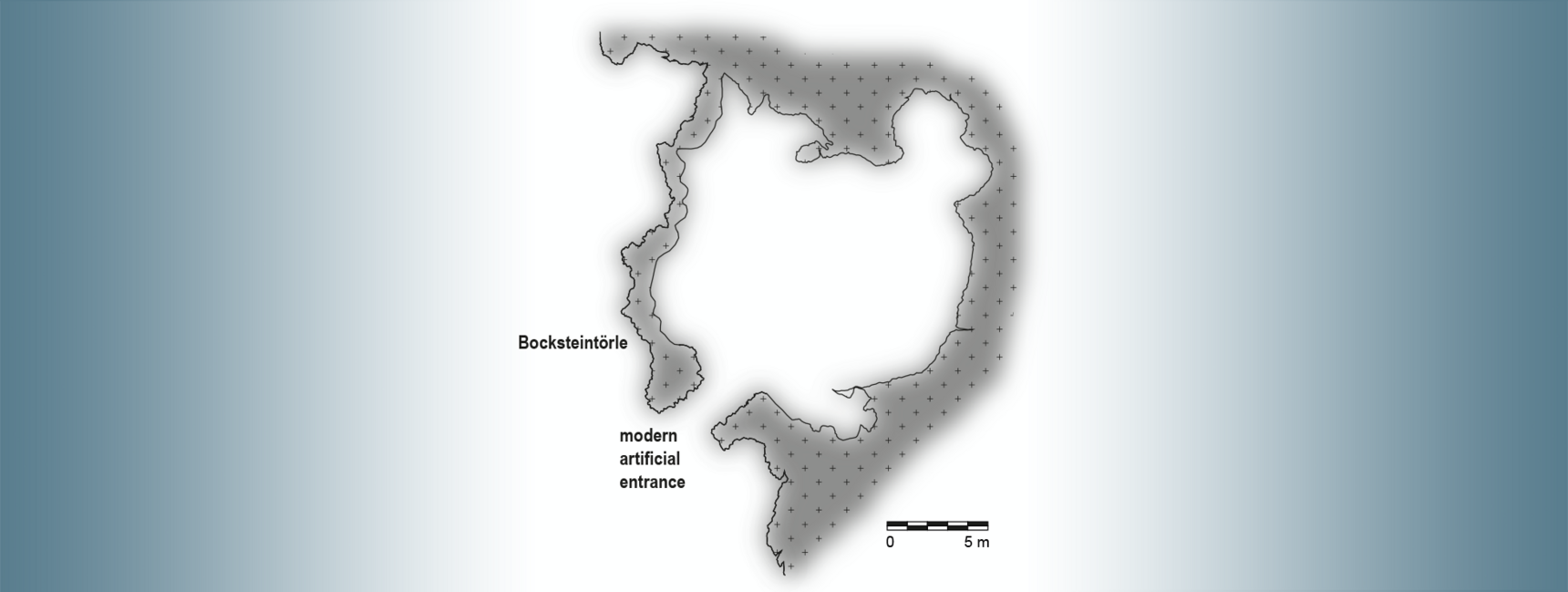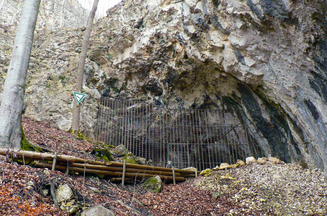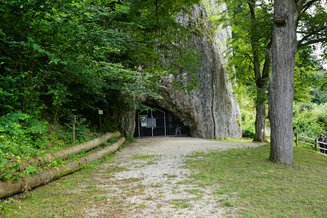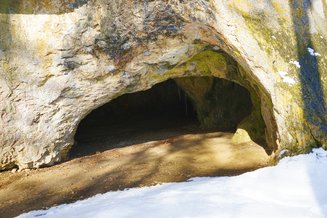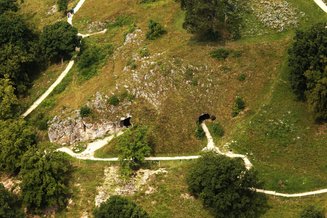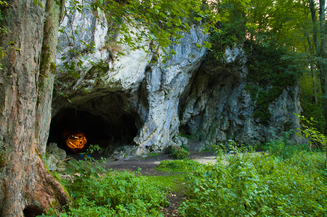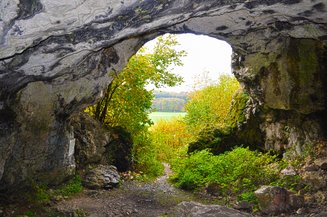Six caves in two valleys
Characteristic Aurignacian assemblages, consisting of typical stone and bone tools as well as personal ornaments and art objects, have so far been discovered in six cave sites of the Swabian Jura. They are situated in valley sections of the rivers Ach (ca. 15 km west of the city of Ulm) and Lone (ca. 20 km northeast of Ulm). Namely, the sites are the Geißenklösterle, Sirgenstein Cave and Hohle Fels in the Ach Valley as well as Vogelherd Cave, Hohlenstein Stadel Cave and Bockstein Cave in the Lone Valley.
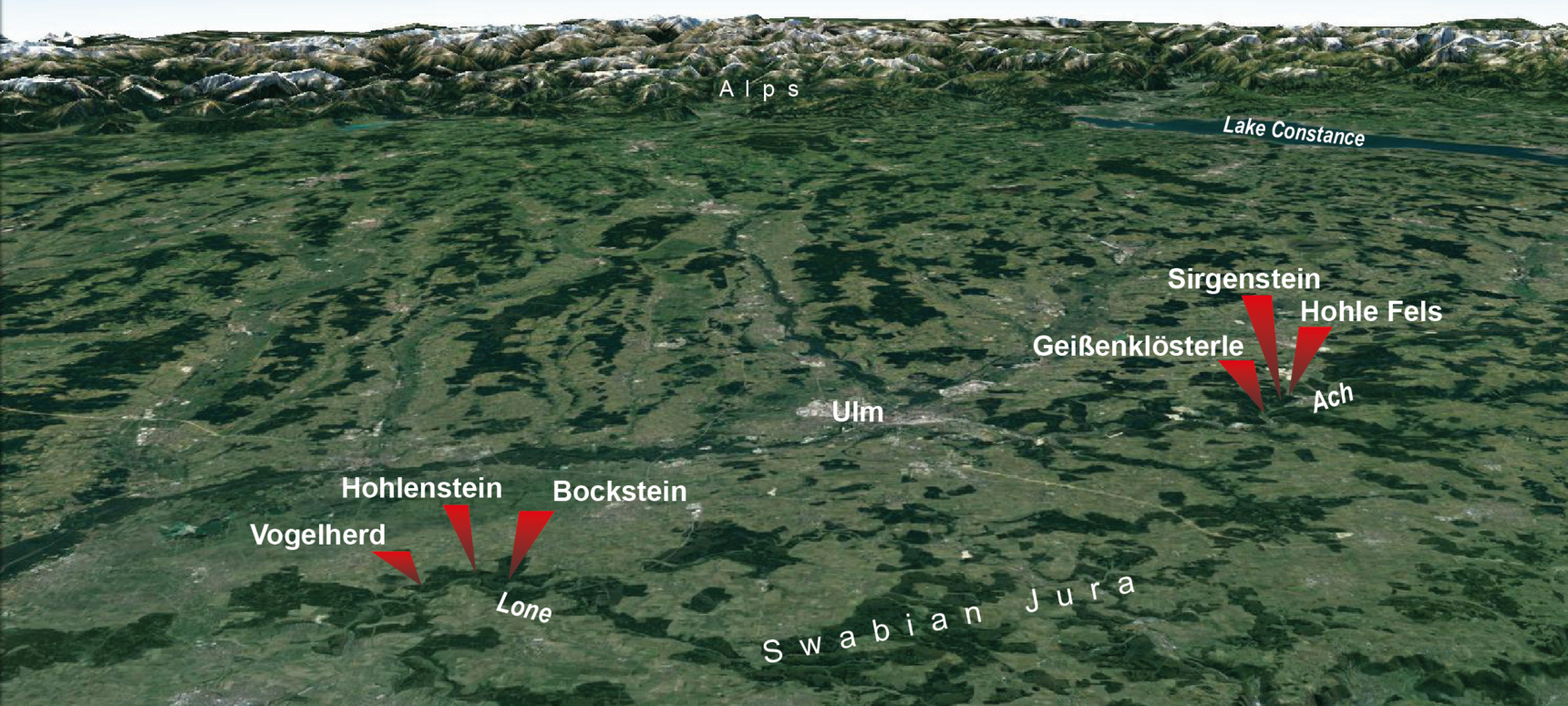

Geißenklösterle
Geißenklösterle is located southwest of Blaubeuren at the southern edge of a greater rock massif, the "Bruckfelsen". It is situated ca. 60 m above the river Ach at an elevation of 585 m asl on the southeastern slope. Today's cave entrance faces to the west and is situated in a recession at the southern edge of a rock formation. Originally this rock formation was probably a large cave hall which presumably collapsed during the Ice Age. At the southeastern edge of this formation a passage way still exists today, which was perhaps the original entrance to the cave hall.

Hohle Fels
The cave in Hohle Fels is located northeast of Schelklingen at the southeastern valley slope of the river Ach, ca. 7 m above the river and 534 m asl. The cave entrance faces north and opens towards a forecourt about 7 by 10 m. The entrance area of the cave consists of an almost 30 m long hallway which opens out to a room ca. 10 m wide - the so-called corridor. Behind the corridor one can step into the actual cave hall that is about 25 by 25 m in dimension, and up to 30 m high. Within the hall a mound of accumulated scree rises towards the back area. On either side there is a pathway that extends for about 10 to 15 m.
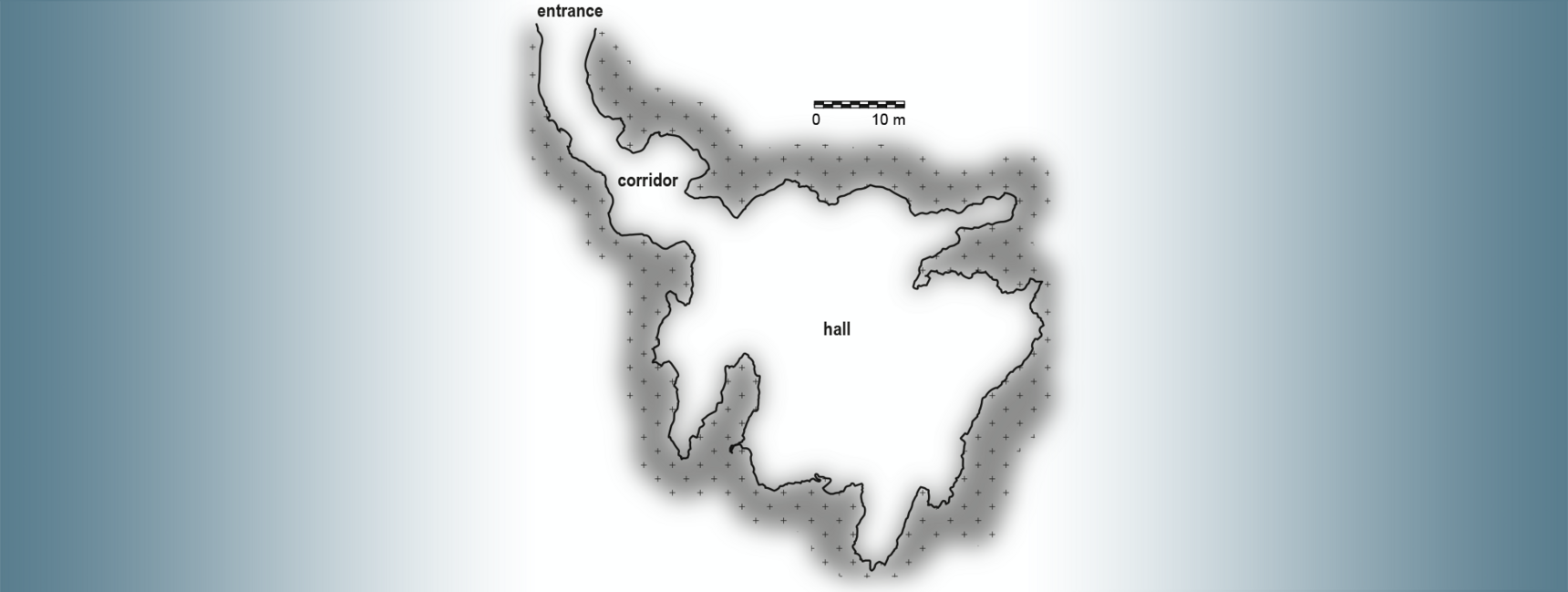
Sirgenstein
Sirgenstein Cave is located southwest of Blaubeuren on the northwest side of the Ach, about 35 m above the valley and at 565 m asl. The ca. 5 m wide entrance opens out to the south. In front of the cave there is an even, roughly 7 by 14 m wide forecourt. The broad cave passageway bends to the right after 10 m in the direction of northeast, and leads into a dome-like hall with two openings in the ceiling after another 20-30 m. In the back section of the cave large rubble blocks are located, behind which the cave passageway probably continues.
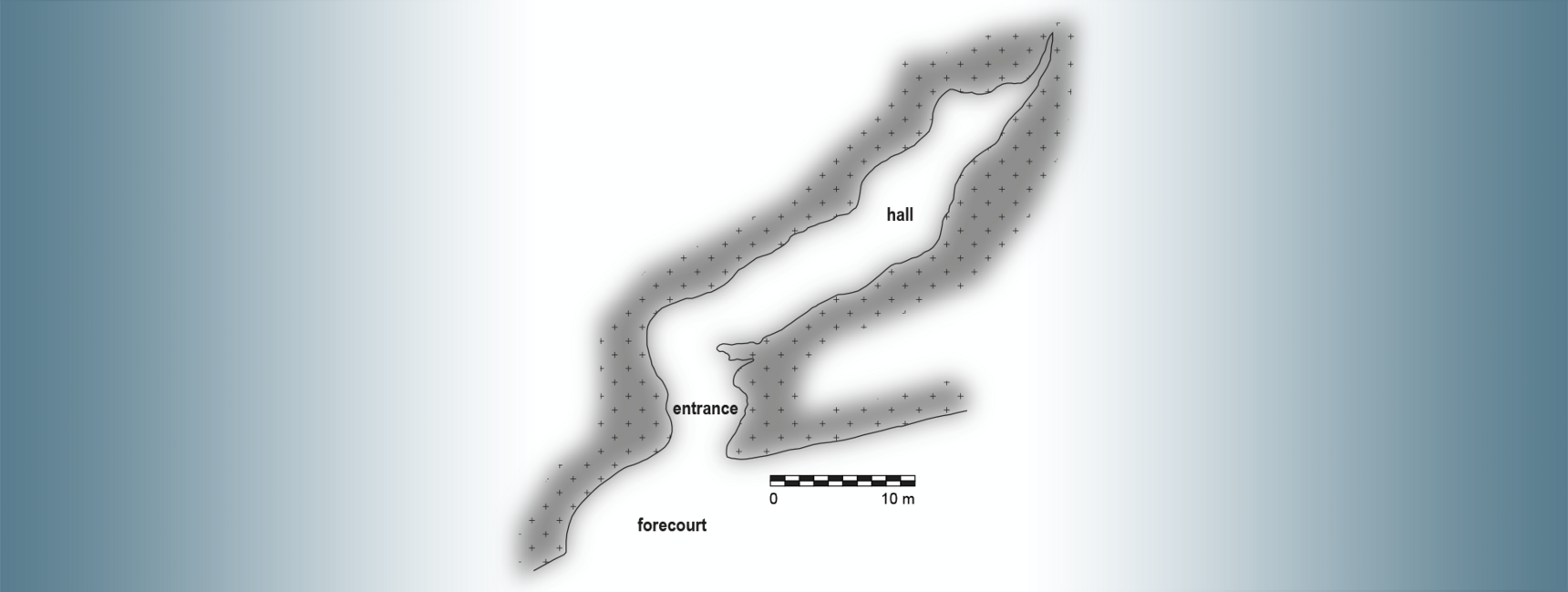
Vogelherd
Vogelherd Cave is located northwest of Niederstotzingen on the southern flank of the Lone valley. Directly below Vogelherd a dry valley coming in from the south meets with the Lone valley, so that the observer has a nice panoramic view from the cave to the valley landscape. The cave lies a bit more than 20 m above the valley at an altitude of 480 m asl. The approximately 50 m long cave chamber has two main approaches – the southwest and the south entrances. There is a small opening nearby to the north that is however not accessible.

Hohlenstein Stadel Cave
The Hohlenstein is a rock massif on the southern edge of the Lone valley northwest of Asselfingen, which is located only a few metres above the valley. Two adjoining caves open up to the north: Bärenhöhle and Stadel Cave. While there is no evidence to date of figurative art that exists from the Bärenhöhle, Stadel Cave with its discoveries has become a significant archaeological site of the Swabian Aurignacian. The almost 10 m wide cave entrance of Stadel Cave lies about 5 m above the valley at 470 m asl. The passageway extends about 70 m to the south in a straight line into the rock. In the back part of the cave two recesses across from one another form a small chamber – the so-called “Chamber of the Lion Man.” In this area the original cave floor, still preserved to this day, rises and leads through a narrow part into a further room that is very flat.

Bockstein
The so-called Bockstein complex – a rock massif with several caves and a rockshelter located north of the town of Rammingen and Öllingen – is situated above the Lone valley basin on the eastern valley slope. From the various archaeological sites, which are situated more than 10 m above the valley and 495 m asl, the view opens into the valley in a southwesterly direction.
The archaeological sites of the Bockstein complex are of high significance primarily for the Middle Palaeolithic – the time of Neanderthals. In the Bockstein complex – more specifically, at Bocksteintörle, which is the original entrance to Bockstein Cave – find strata from the Aurignacian were also exposed. The current large entrance to the cave is the result of a blasting operation in the 19th century.
